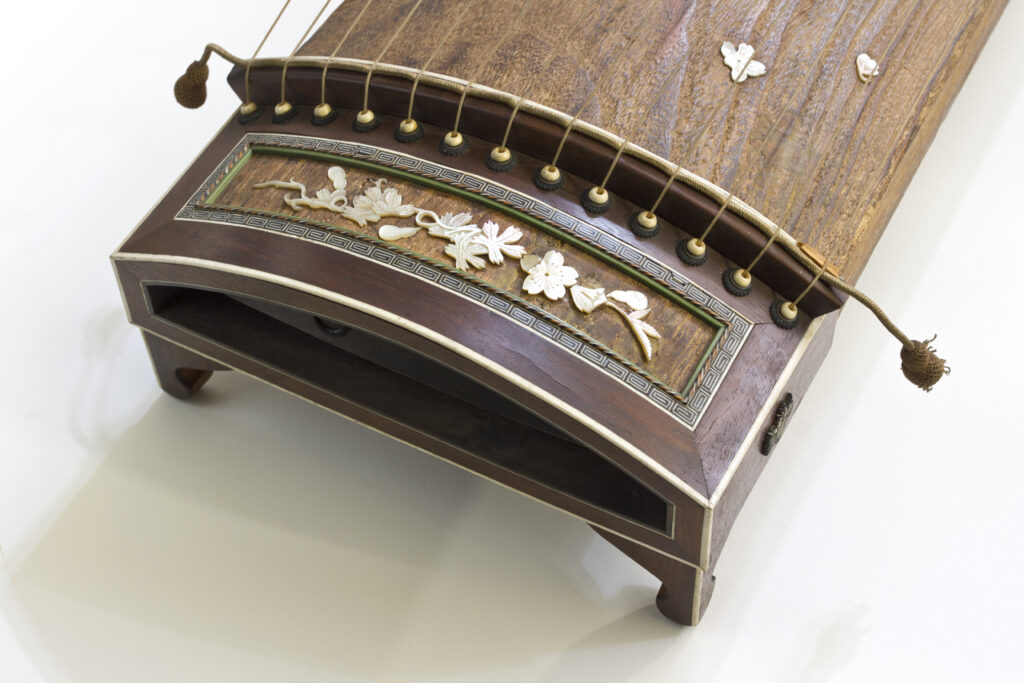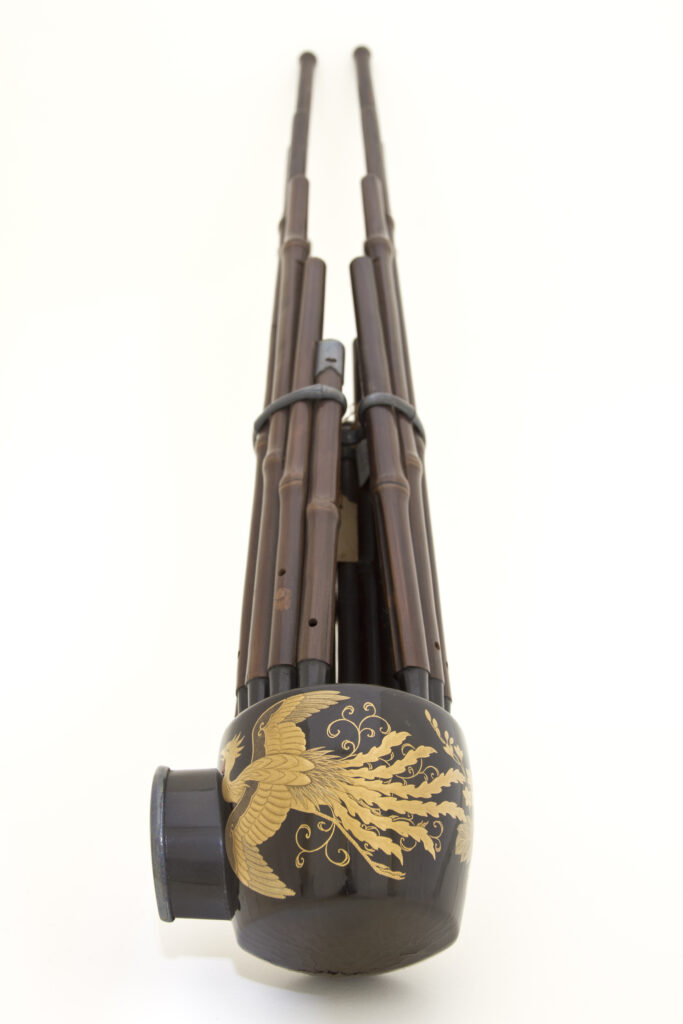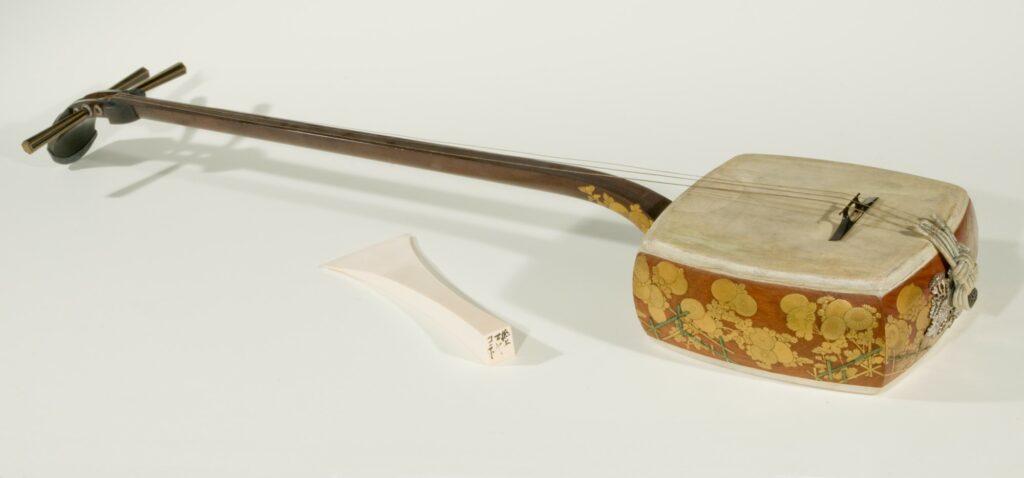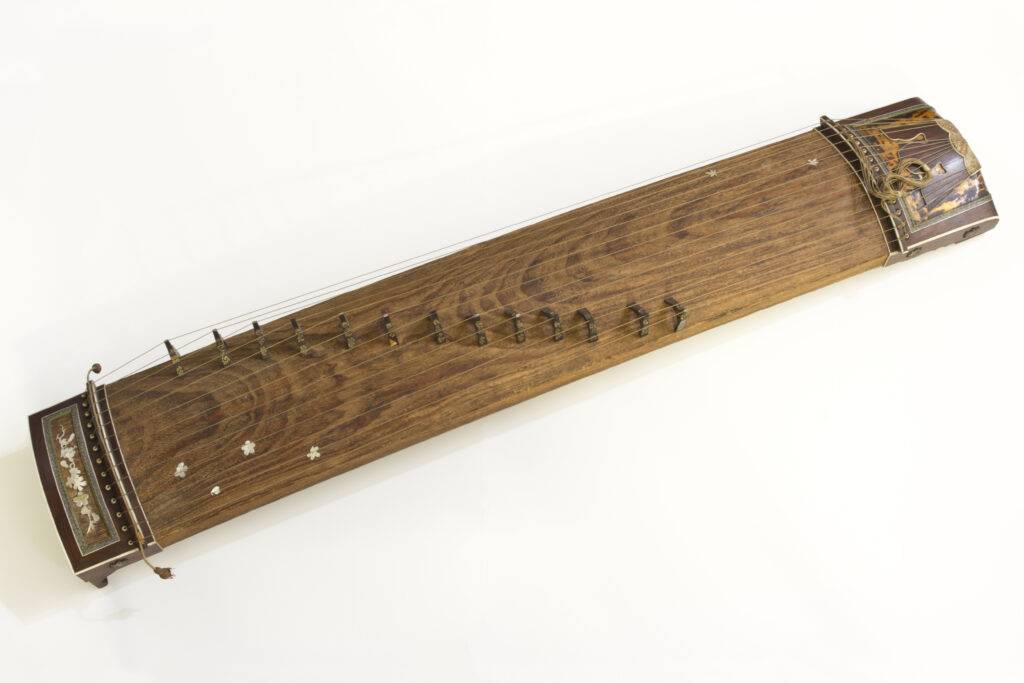ROOM 8
Room 8 displays musical instrument from Japan. Flutes (nōkan) and percussions (ōtsuzumi, kotsuzumi e taiko) were played by the Noh theatre orchestra.
There are several instruments for gagaku, the court music. Among these, in the showcase 17, there are hichiriki (a double reed fue, flute), ryuteki and komabue (flutes) and some mouth organs (shō). This last consists of 17 slender bamboo pipes, each of which is fitted in its base with a metal free reed. The big koto (a sort of zither) have an exceptional artistic value. They are made of paulownia wood and its 13 strings are plucked using three fingerpicks, worn on the thumb, index finger, and middle finger.
In the showcase 17 there is also a beautiful shamisen (a three-stringed lute), provided of a lacquered resonating body with cat or dog skin on the top. It is exposed under its lacquered case.
On the walls, there are scroll-paintings and screens by some Edo great masters. Two of them are signed Hokusai, some others by Moronobu, Harunobu and Kunisada. They represent outdoor celebrations, courtesans, geisha, heroines and court ladies, typical subjects of ukiyo-e, the floating world images of the Edo period.
The collection is very rich in textiles. In the alcove, three silk kimono are displayed by rotation on dress supports (iko).









